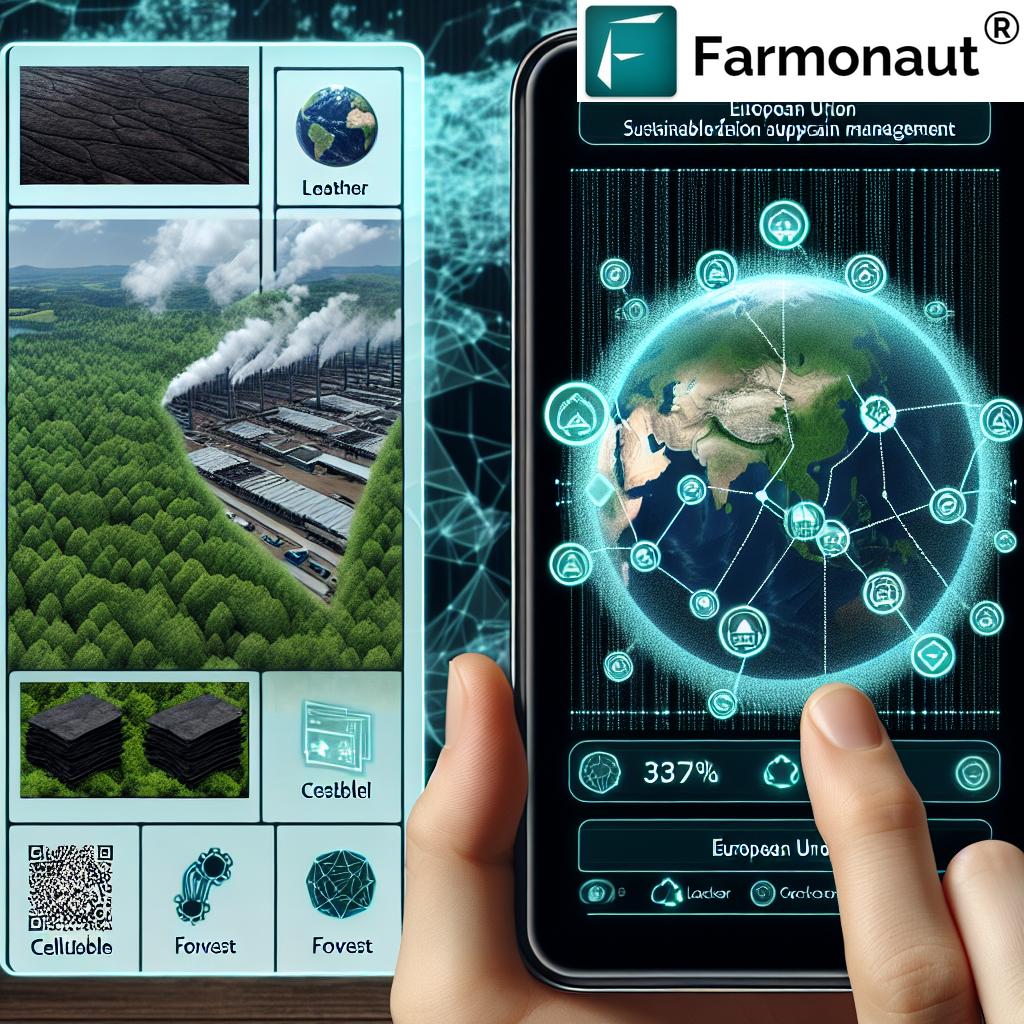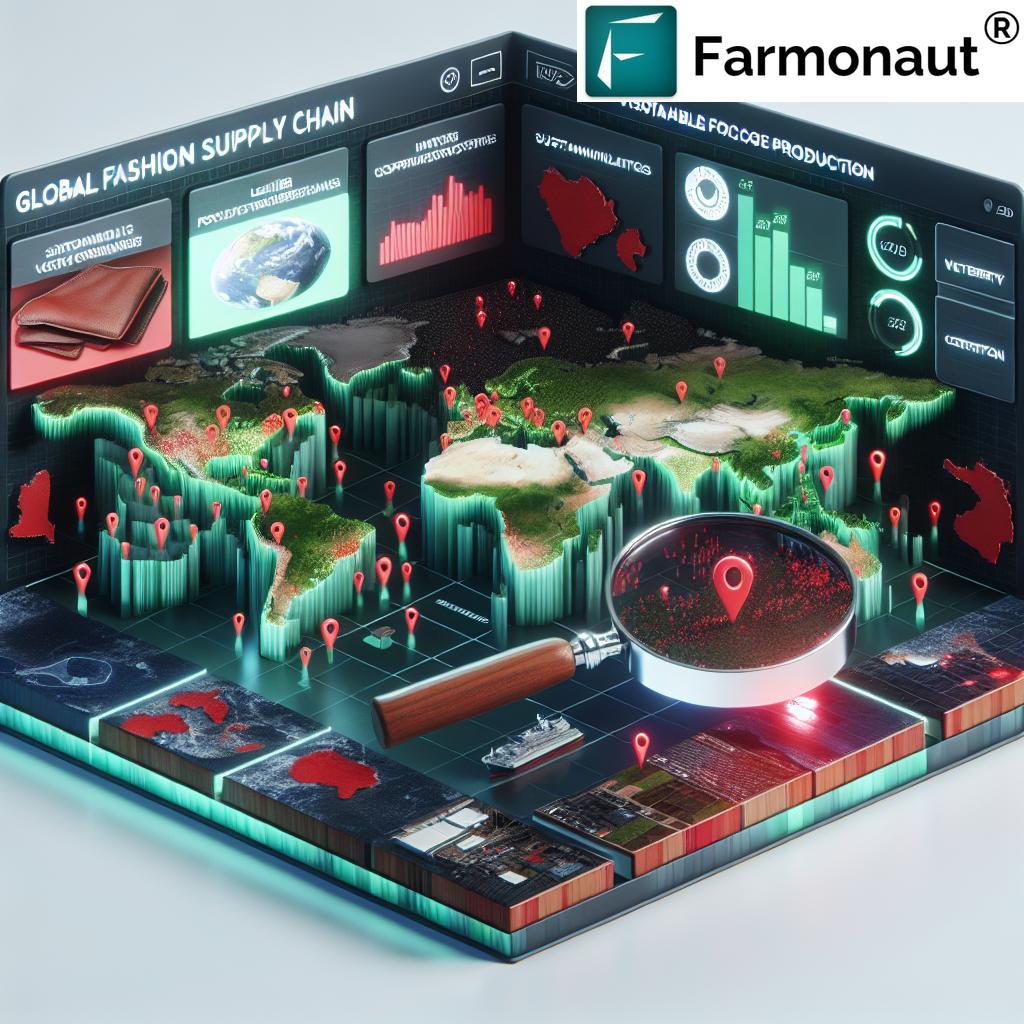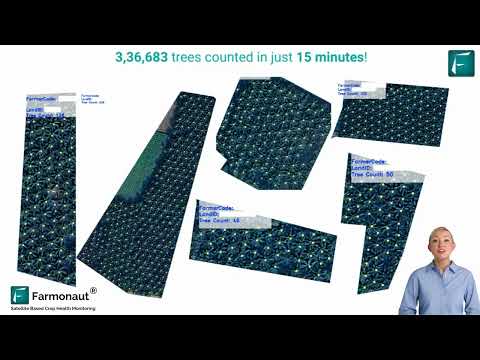Sustainable Fashion: Tackling Deforestation in Leather and Viscose Supply Chains for EU Compliance
“The EU Deforestation Regulation impacts fashion supply chains, affecting two key materials: leather and viscose.”

In the ever-evolving landscape of sustainable fashion, we find ourselves at a critical juncture where addressing deforestation in supply chains has become paramount. As we delve into this pressing issue, we’ll explore the intricate relationship between fashion, forests, and the impending EU Deforestation Regulation. Our focus will be on two key materials that are central to this discussion: leather and viscose.
The fashion industry, known for its creativity and innovation, now faces a new challenge: ensuring that its raw materials are sourced responsibly without contributing to global deforestation. This blog post will guide you through the complexities of sustainable supply chain management and deforestation risk assessment, offering insights into how fashion companies can align with EU regulations while maintaining their commitment to style and quality.
The Urgency of Tackling Deforestation in Fashion
Deforestation is a global crisis that demands immediate attention. The fashion industry, as a significant consumer of natural resources, has a crucial role to play in combating this issue. Leather, derived from animal hides, and viscose, produced from wood pulp, are two materials that directly link the fashion world to forest ecosystems.
- Leather production often involves clearing land for cattle grazing
- Viscose manufacturing can lead to the destruction of ancient and endangered forests
- Both materials contribute to biodiversity loss and climate change when sourced unsustainably
As we navigate these challenges, it’s essential to recognize the power of technology in driving sustainable solutions. At Farmonaut, we’re committed to leveraging innovative technologies to support sustainable practices across industries, including fashion.
Understanding the EU Deforestation Regulation
The European Union has taken a bold step towards combating global deforestation with its new regulation. This legislation aims to ensure that products sold in the EU market do not contribute to deforestation or forest degradation. For the fashion industry, this means a significant shift in how companies source and manage their supply chains, particularly for materials like leather and viscose.
Key aspects of the EU Deforestation Regulation include:
- Mandatory due diligence for companies importing or exporting relevant products
- Traceability requirements for supply chains
- Risk assessment and mitigation measures
- Potential fines and market exclusion for non-compliance
To adapt to these new requirements, fashion brands must take decisive action. This is where Farmonaut’s expertise in agritech can play a crucial role, offering solutions that enhance supply chain transparency and support sustainable sourcing practices.
The Three-Step Approach to Tackling Deforestation
To effectively address deforestation in leather and viscose supply chains, we propose a three-step approach: Analyze, Find Solutions, and Implement. Let’s break down each step:
1. Analyze: Conducting a Comprehensive Deforestation Risk Assessment
The first step in tackling deforestation is to conduct a thorough analysis of your supply chain. This involves:
- Mapping out your entire supply chain from raw material sourcing to final product
- Identifying high-risk areas for deforestation in leather and viscose production
- Assessing the current sustainability practices of your suppliers
- Evaluating the potential impact of your operations on forest ecosystems
Farmonaut’s satellite-based monitoring solutions can provide valuable insights into land use changes and forest cover, supporting accurate risk assessments.
Explore Farmonaut’s API for advanced satellite data analysis
2. Find Solutions: Developing Strategies for Sustainable Sourcing
Once you’ve identified the risks, the next step is to develop effective solutions:
- Explore alternative, sustainable materials that can replace high-risk leather and viscose
- Invest in technologies that improve traceability, such as blockchain
- Collaborate with suppliers to implement sustainable forestry practices
- Develop a robust biodiversity strategy that goes beyond compliance
Farmonaut’s blockchain-based traceability solutions can help fashion brands ensure transparency and accountability throughout their supply chains.
3. Implement: Putting Sustainable Practices into Action
The final step is to implement your strategies and solutions:
- Integrate sustainable sourcing practices into your procurement processes
- Train your team and suppliers on deforestation-free material management
- Establish monitoring and reporting systems to track progress
- Continuously improve and adapt your strategies based on outcomes
Implementation requires commitment and ongoing effort. Farmonaut’s AI-powered advisory system can provide real-time insights to support decision-making and ensure continuous improvement in sustainable practices.
Leveraging Technology for Sustainable Supply Chain Management
In the quest for sustainable fashion, technology plays a pivotal role. Innovative solutions can help fashion companies overcome the challenges of managing complex, global supply chains while ensuring compliance with regulations like the EU Deforestation Regulation.
Blockchain: Enhancing Supply Chain Traceability
Blockchain technology offers unprecedented transparency and traceability in supply chains. By creating an immutable record of each transaction and movement of materials, blockchain can help fashion brands:
- Track the origin of leather and viscose materials with precision
- Verify sustainability claims and certifications
- Provide consumers with detailed information about product sourcing
- Detect and prevent fraud in the supply chain
Farmonaut’s blockchain-based traceability solutions are designed to meet these needs, offering fashion companies a powerful tool for ensuring transparency and compliance.
Satellite Imagery and AI: Monitoring Forest Cover and Land Use
Satellite technology, combined with artificial intelligence, provides a bird’s-eye view of forest ecosystems and land use changes. This technology enables fashion companies to:
- Monitor forest cover in real-time across vast areas
- Detect early signs of deforestation or forest degradation
- Assess the impact of sourcing practices on local ecosystems
- Make data-driven decisions about supplier selection and risk management
Farmonaut’s satellite-based monitoring solutions offer these capabilities, helping fashion brands stay ahead of deforestation risks in their supply chains.
“Sustainable viscose production can reduce water usage by up to 50% compared to conventional methods.”
Sustainable Leather Sourcing: Balancing Tradition and Innovation
Leather has been a staple in fashion for centuries, valued for its durability and aesthetic appeal. However, traditional leather production often comes at a high environmental cost. To address these challenges, fashion companies must explore innovative approaches to sustainable leather sourcing:
- Promote regenerative grazing practices that can actually improve soil health and biodiversity
- Invest in leather alternatives made from agricultural waste or lab-grown materials
- Implement strict traceability measures to ensure leather comes from deforestation-free sources
- Support initiatives that improve animal welfare and reduce the environmental impact of tanning processes
By embracing these strategies, fashion brands can continue to offer high-quality leather products while minimizing their impact on forests and ecosystems.
Cellulose Fabric Sustainability: The Promise of Sustainable Viscose
Viscose, also known as rayon, is a popular cellulose-based fabric that offers a silk-like texture and versatility. However, conventional viscose production can contribute to deforestation and pollution. The good news is that sustainable viscose production methods are emerging:
- Closed-loop production systems that recycle chemicals and minimize waste
- Use of sustainably managed forest sources certified by organizations like the Forest Stewardship Council (FSC)
- Development of innovative cellulose fibers made from agricultural waste or recycled textiles
- Implementation of water-saving technologies in the manufacturing process
Fashion companies can support the transition to sustainable viscose by partnering with innovative suppliers and setting clear sustainability targets for their cellulose-based materials.
Developing a Robust Biodiversity Strategy for Fashion
Addressing deforestation is just one part of a comprehensive biodiversity strategy. Fashion companies must consider their broader impact on ecosystems and work to promote biodiversity throughout their operations. Key elements of a robust biodiversity strategy include:
- Setting science-based targets for biodiversity conservation
- Investing in nature-based solutions that support both climate and biodiversity goals
- Collaborating with local communities and conservation organizations
- Integrating biodiversity considerations into product design and material selection
By adopting a holistic approach to biodiversity, fashion brands can contribute to the restoration and protection of vital ecosystems while building resilience in their supply chains.
Collaboration: The Key to Sustainable Supply Chains
Tackling deforestation in fashion supply chains is not a challenge that any single company can solve alone. Collaboration is essential for creating lasting change:
- Engage with suppliers to build capacity for sustainable practices
- Participate in industry initiatives and multi-stakeholder platforms
- Share best practices and lessons learned with peers
- Work with governments and NGOs to support policy development and enforcement
By fostering a collaborative approach, fashion companies can accelerate progress towards deforestation-free supply chains and drive industry-wide transformation.
The Role of Technology in Sustainable Fashion
As we’ve explored throughout this blog post, technology plays a crucial role in enabling sustainable practices in the fashion industry. From blockchain-based traceability to satellite monitoring of forest cover, innovative solutions are empowering fashion companies to tackle complex challenges like deforestation.
At Farmonaut, we’re committed to supporting sustainable practices across industries through our advanced agricultural technology solutions. While our primary focus is on agriculture, the principles of sustainability and resource management that we champion are directly applicable to the fashion industry’s efforts to create deforestation-free supply chains.
Our satellite-based monitoring capabilities, AI-driven insights, and blockchain solutions can be adapted to support fashion companies in their sustainability journey. By leveraging these technologies, brands can gain unprecedented visibility into their supply chains, make data-driven decisions, and ensure compliance with regulations like the EU Deforestation Regulation.
Deforestation Risk Assessment Matrix for Fashion Supply Chains
| Supply Chain Stage | Material Type | Deforestation Risk Level | Key Challenges | Potential Solutions |
|---|---|---|---|---|
| Raw Material Sourcing | Leather | High (70%) |
• Land clearing for cattle grazing • Lack of traceability to farm level |
• Implement satellite monitoring • Adopt blockchain traceability |
| Raw Material Sourcing | Viscose | High (60%) |
• Sourcing from ancient forests • Unclear forest management practices |
• Use FSC-certified sources • Invest in alternative cellulose fibers |
| Processing | Leather | Medium (40%) |
• Water pollution from tanning • Energy-intensive processes |
• Adopt eco-friendly tanning methods • Implement water recycling systems |
| Processing | Viscose | Medium (50%) |
• Chemical pollution • High water consumption |
• Use closed-loop production systems • Implement water-saving technologies |
| Manufacturing | Leather | Low (20%) |
• Waste generation • Limited use of recycled materials |
• Implement zero-waste design principles • Increase use of upcycled leather |
| Manufacturing | Viscose | Low (15%) |
• Energy consumption • Microfiber shedding |
• Use renewable energy sources • Develop improved fiber technologies |
| Distribution | Leather & Viscose | Low (10%) |
• Carbon emissions from transport • Packaging waste |
• Optimize logistics with AI • Use sustainable packaging materials |
Conclusion: Embracing a Sustainable Future in Fashion
As we’ve explored in this comprehensive guide, tackling deforestation in leather and viscose supply chains is a complex but essential task for the fashion industry. By adopting a strategic approach that combines risk assessment, innovative solutions, and robust implementation, fashion companies can not only comply with regulations like the EU Deforestation Regulation but also contribute to global efforts to protect our planet’s vital forest ecosystems.
The journey towards sustainable fashion is ongoing, and it requires commitment, collaboration, and continuous innovation. By leveraging cutting-edge technologies and embracing sustainable practices, the fashion industry can lead the way in creating a more sustainable and responsible future.
As we move forward, let’s remember that every action counts. Whether you’re a fashion brand executive, a supplier, or a conscious consumer, your choices can make a difference in the fight against deforestation and the pursuit of sustainable fashion.
FAQ Section
Q: What is the EU Deforestation Regulation?
A: The EU Deforestation Regulation is a legislation aimed at ensuring products sold in the EU market do not contribute to deforestation or forest degradation. It requires companies to conduct due diligence on their supply chains and ensure traceability of materials like leather and viscose.
Q: How can blockchain technology help in tackling deforestation in fashion supply chains?
A: Blockchain technology enhances supply chain traceability by creating an immutable record of transactions and material movements. This allows fashion companies to track the origin of materials, verify sustainability claims, and provide transparent information to consumers.
Q: What are some sustainable alternatives to traditional leather?
A: Sustainable alternatives to traditional leather include materials made from agricultural waste, lab-grown leather, and plant-based leather alternatives. Additionally, leather sourced from regenerative grazing practices can offer a more sustainable option.
Q: How can fashion companies assess their deforestation risk?
A: Fashion companies can assess their deforestation risk by mapping their supply chains, identifying high-risk areas for deforestation, evaluating supplier practices, and using technologies like satellite monitoring to track land use changes in sourcing regions.
Q: What is sustainable viscose, and how does it differ from conventional viscose?
A: Sustainable viscose is produced using closed-loop systems that recycle chemicals and minimize waste. It often uses raw materials from sustainably managed forests or alternative sources like agricultural waste. Compared to conventional viscose, it has a significantly lower environmental impact and reduces water usage.







